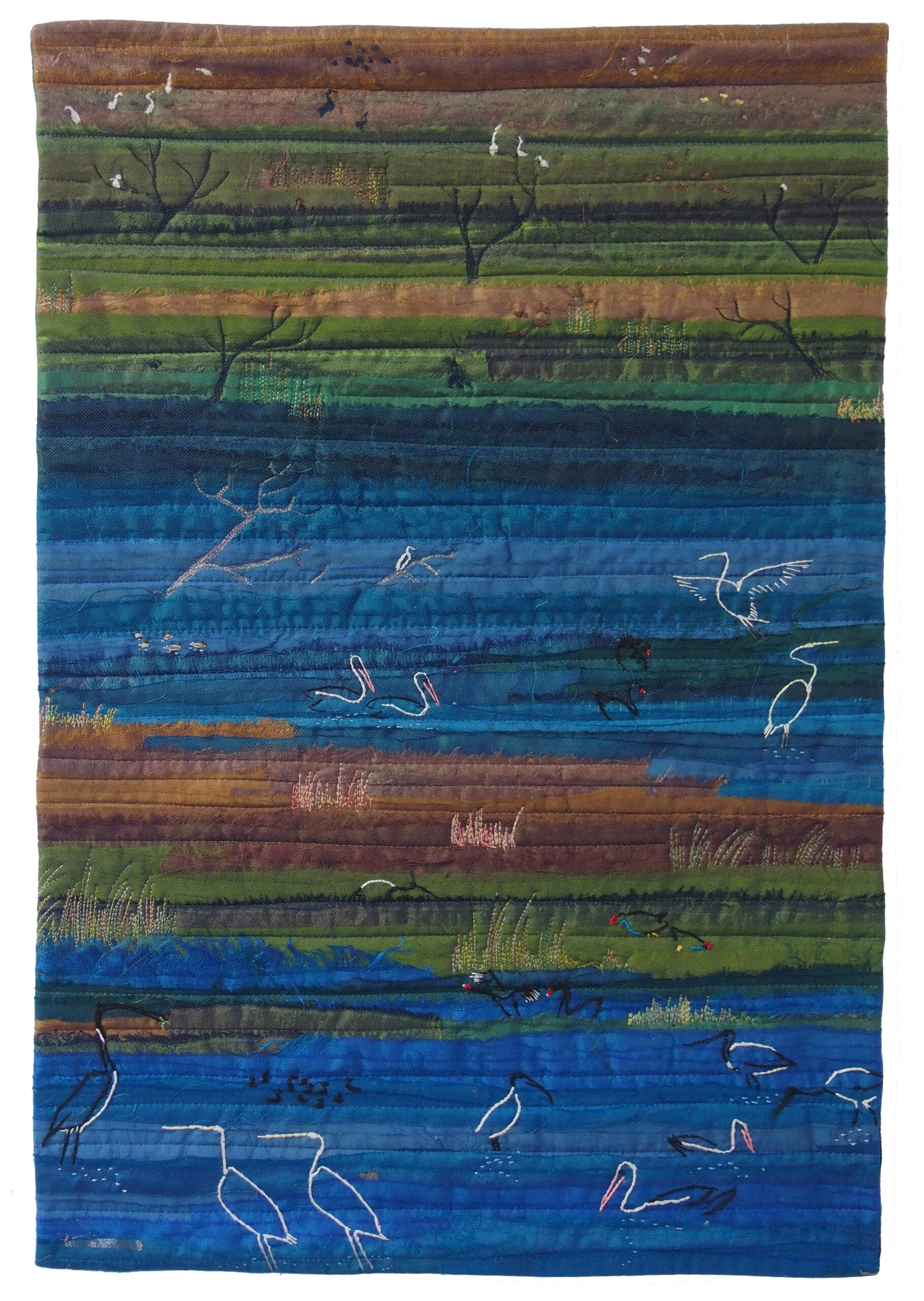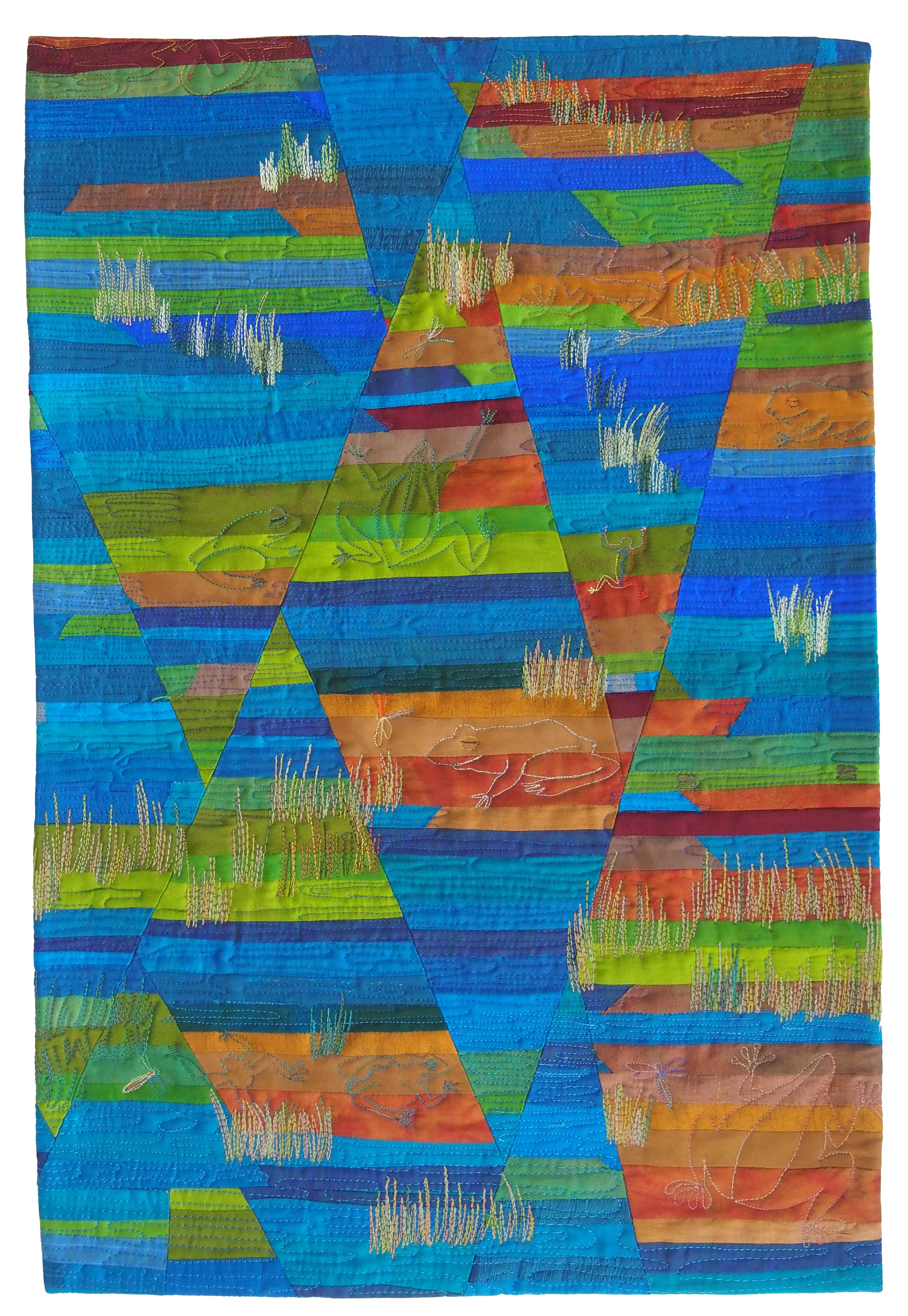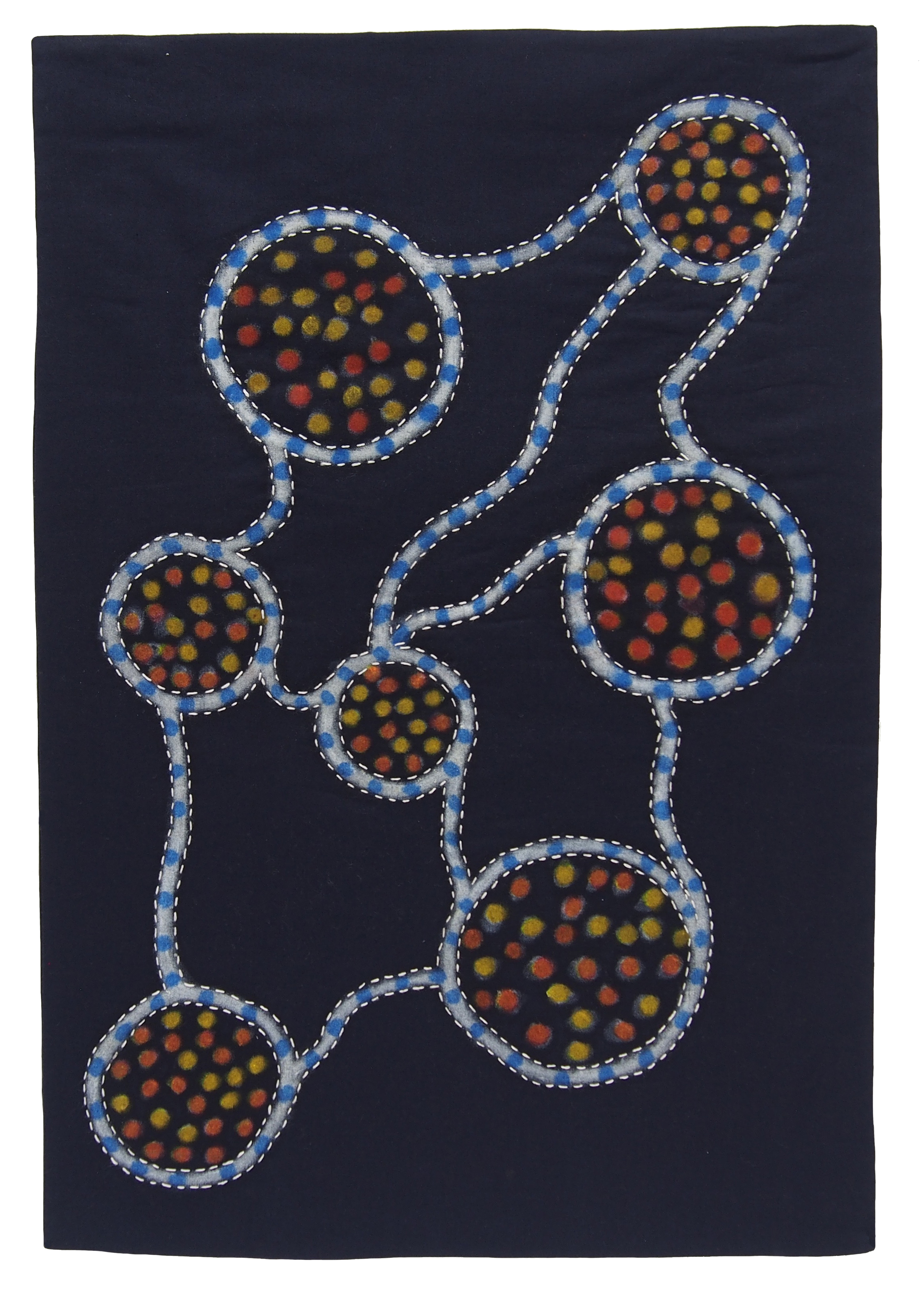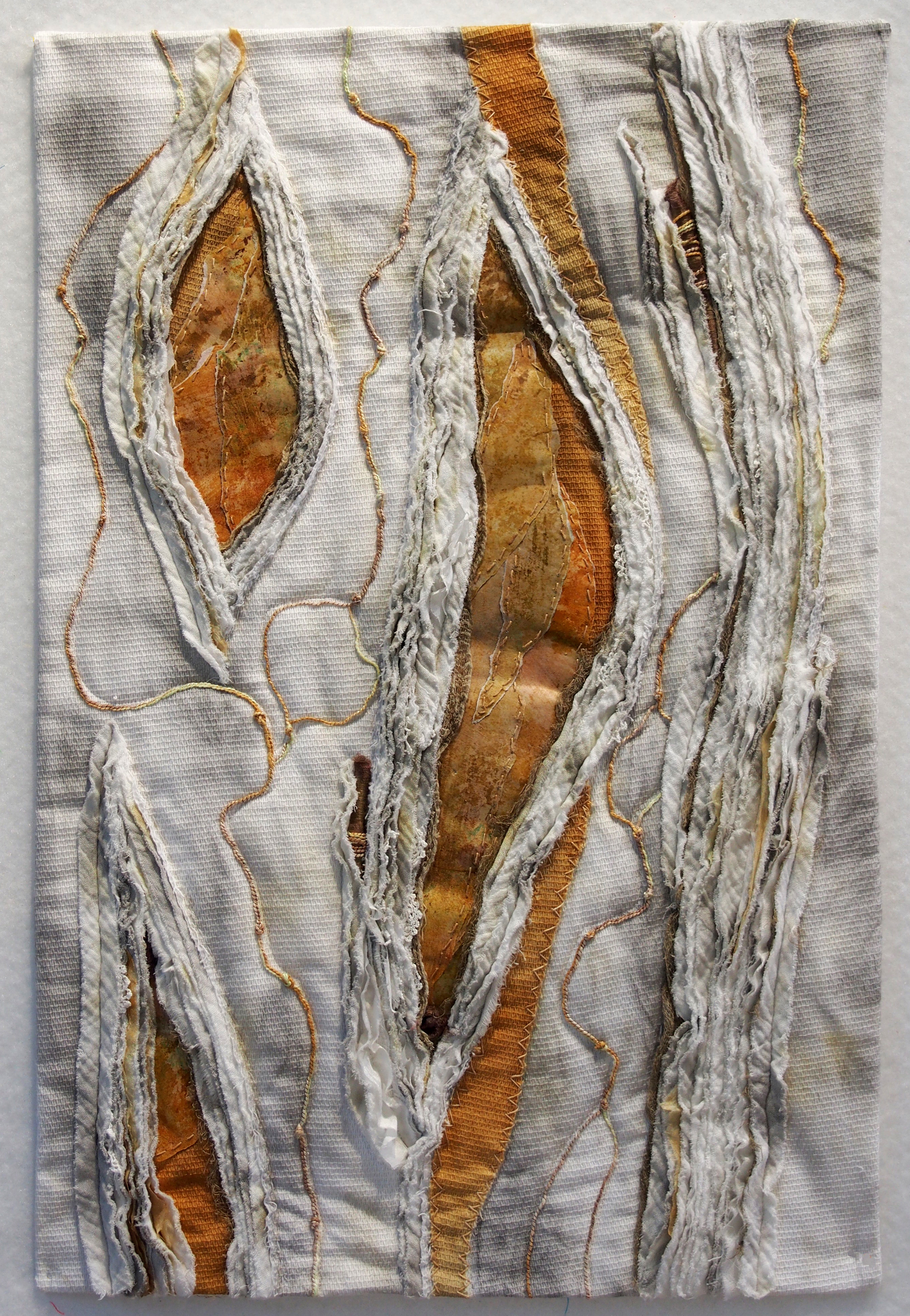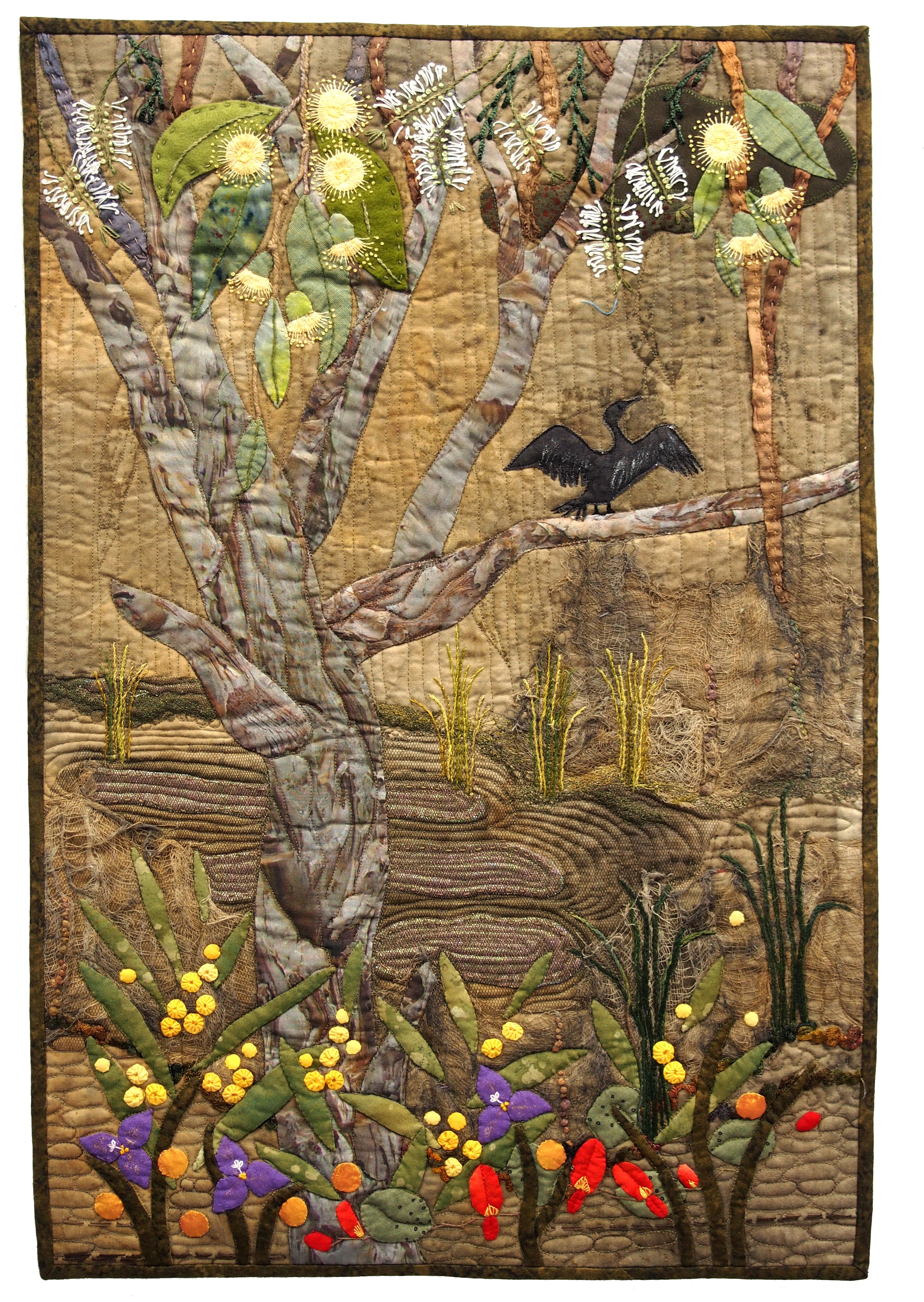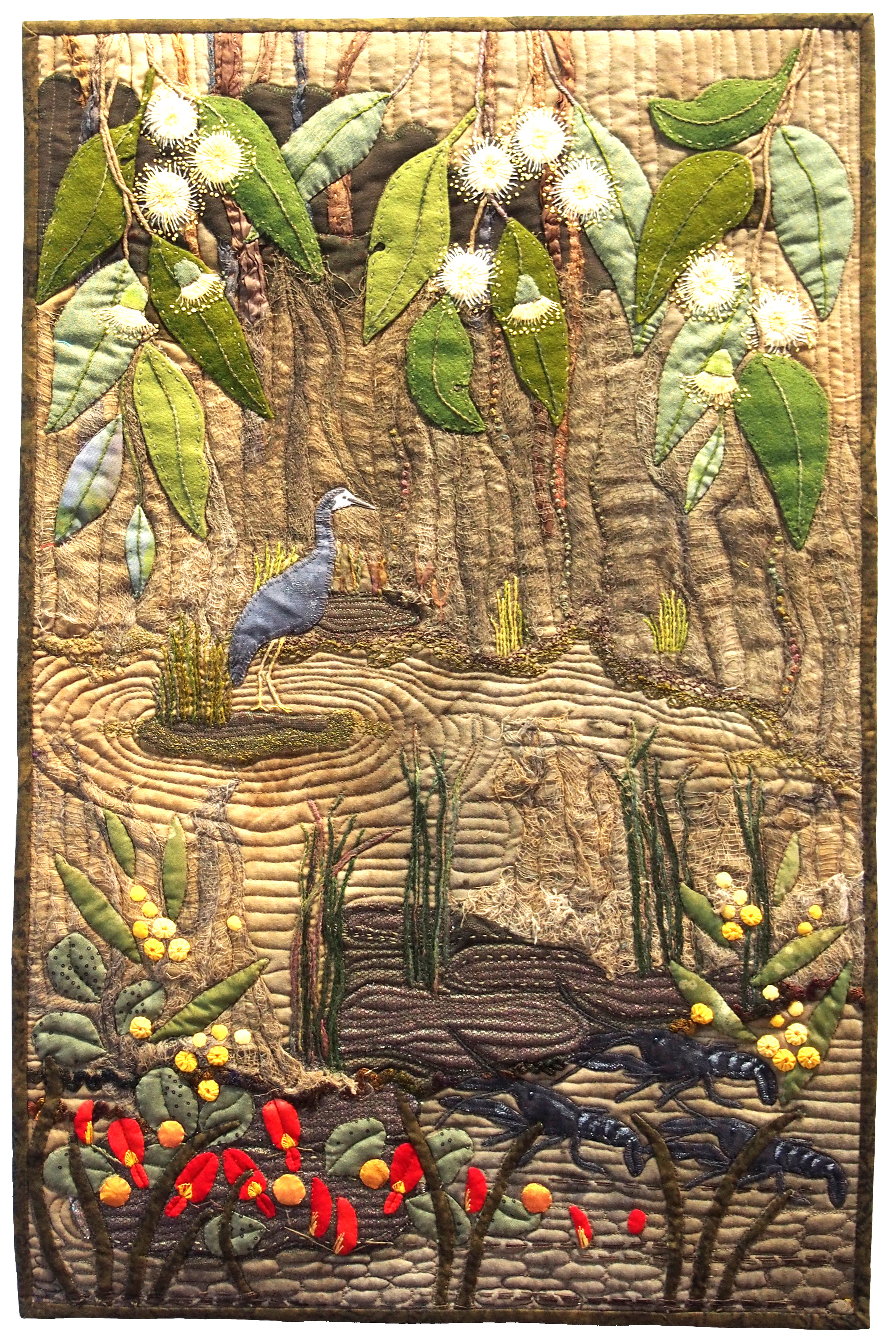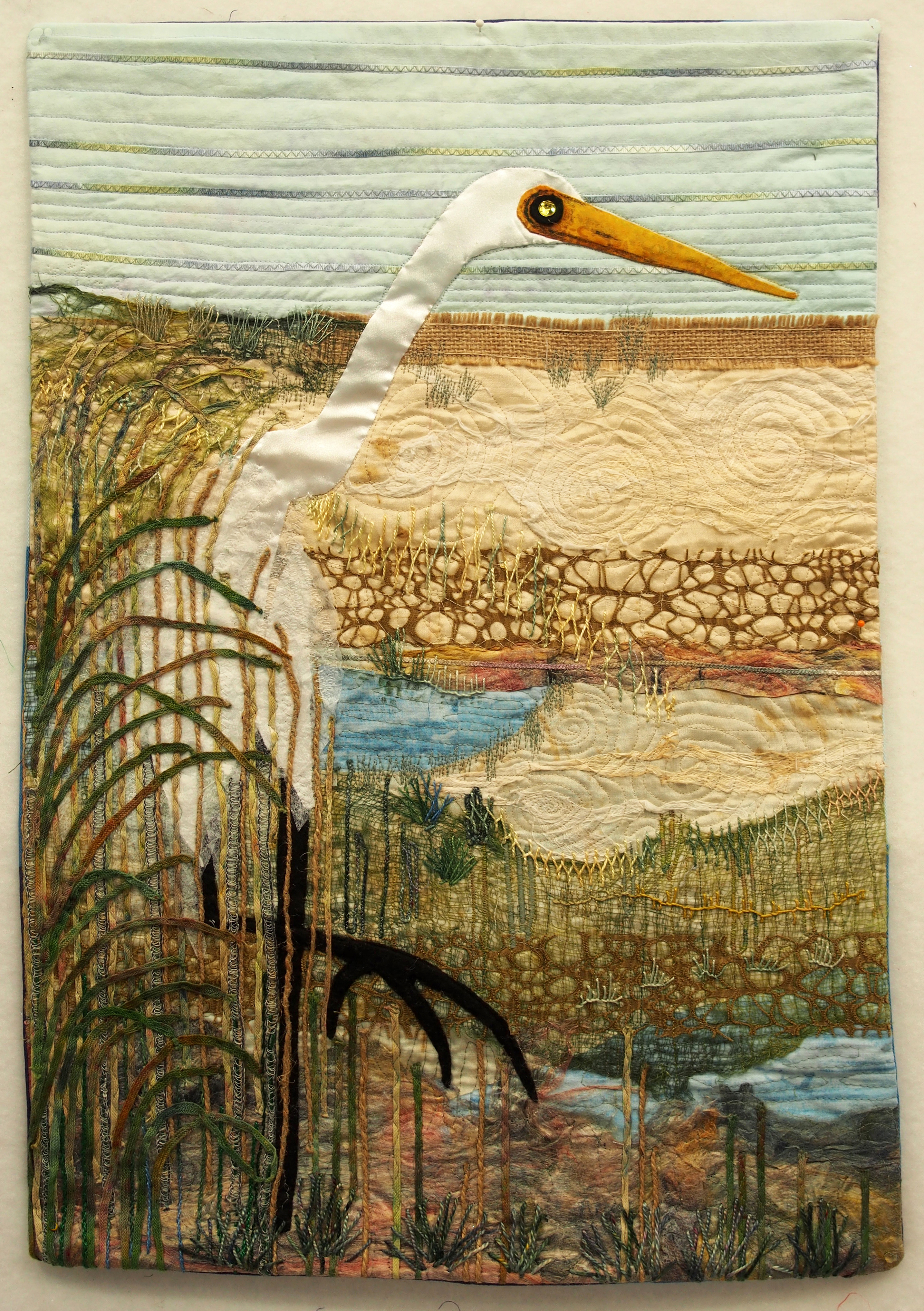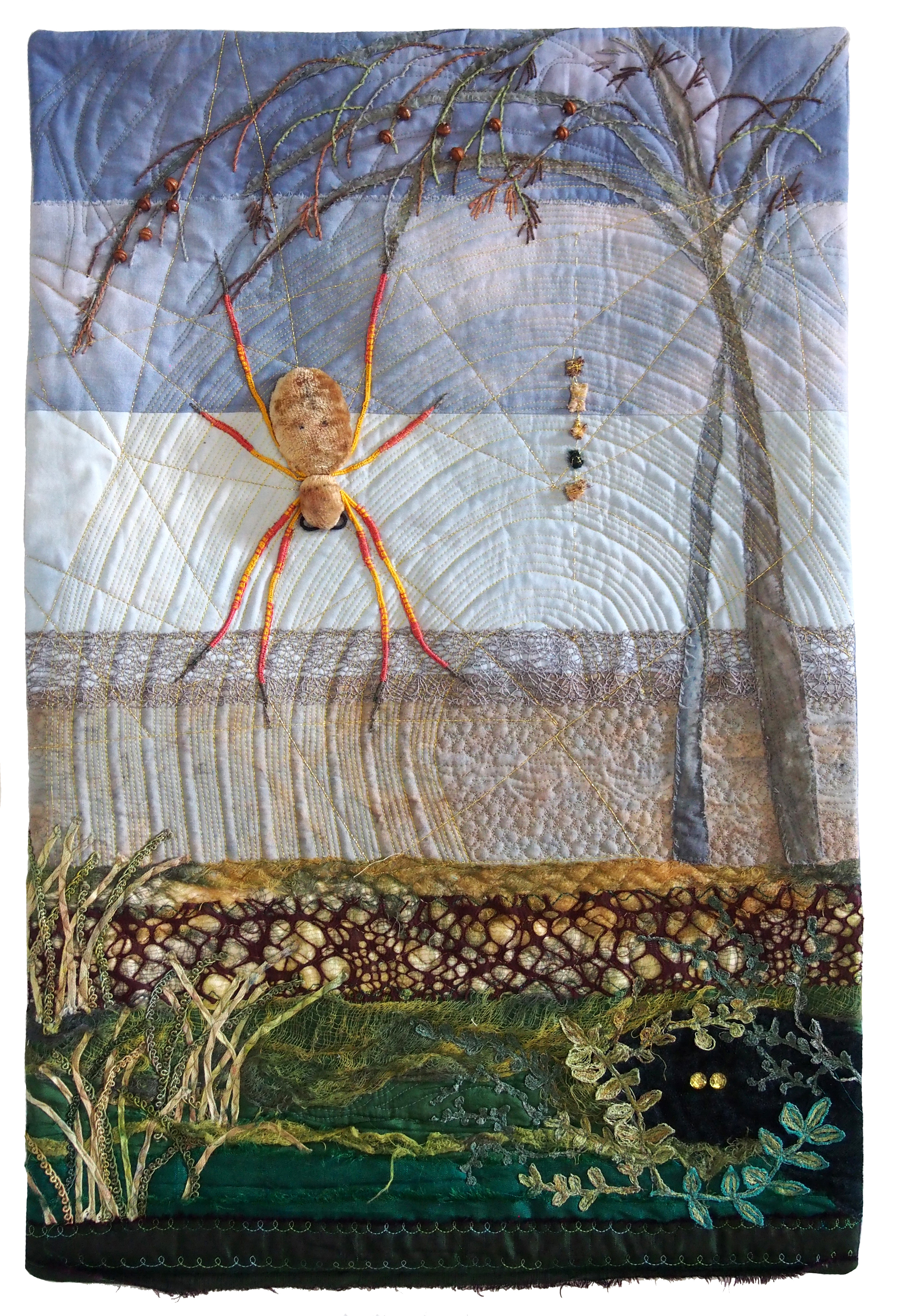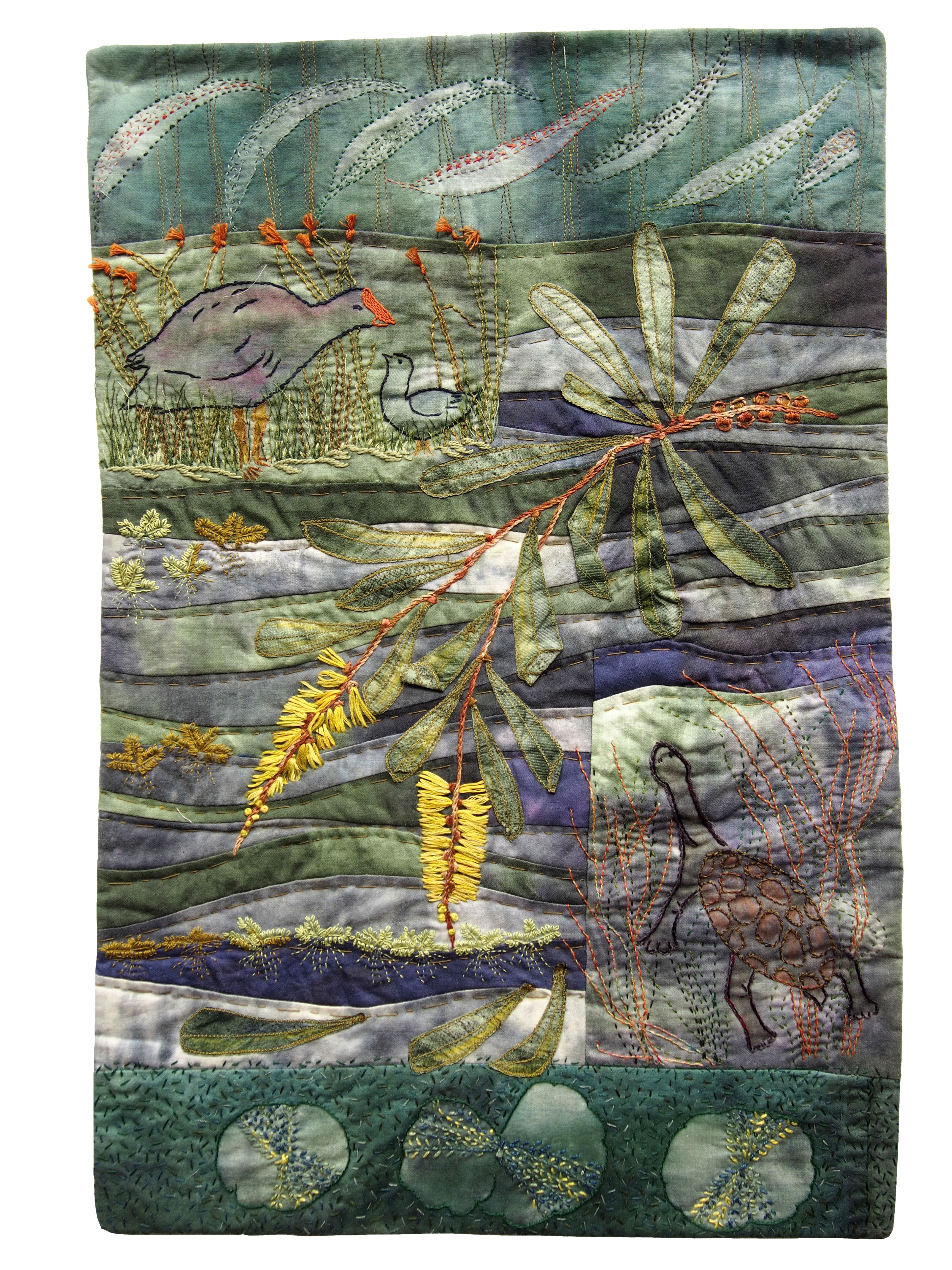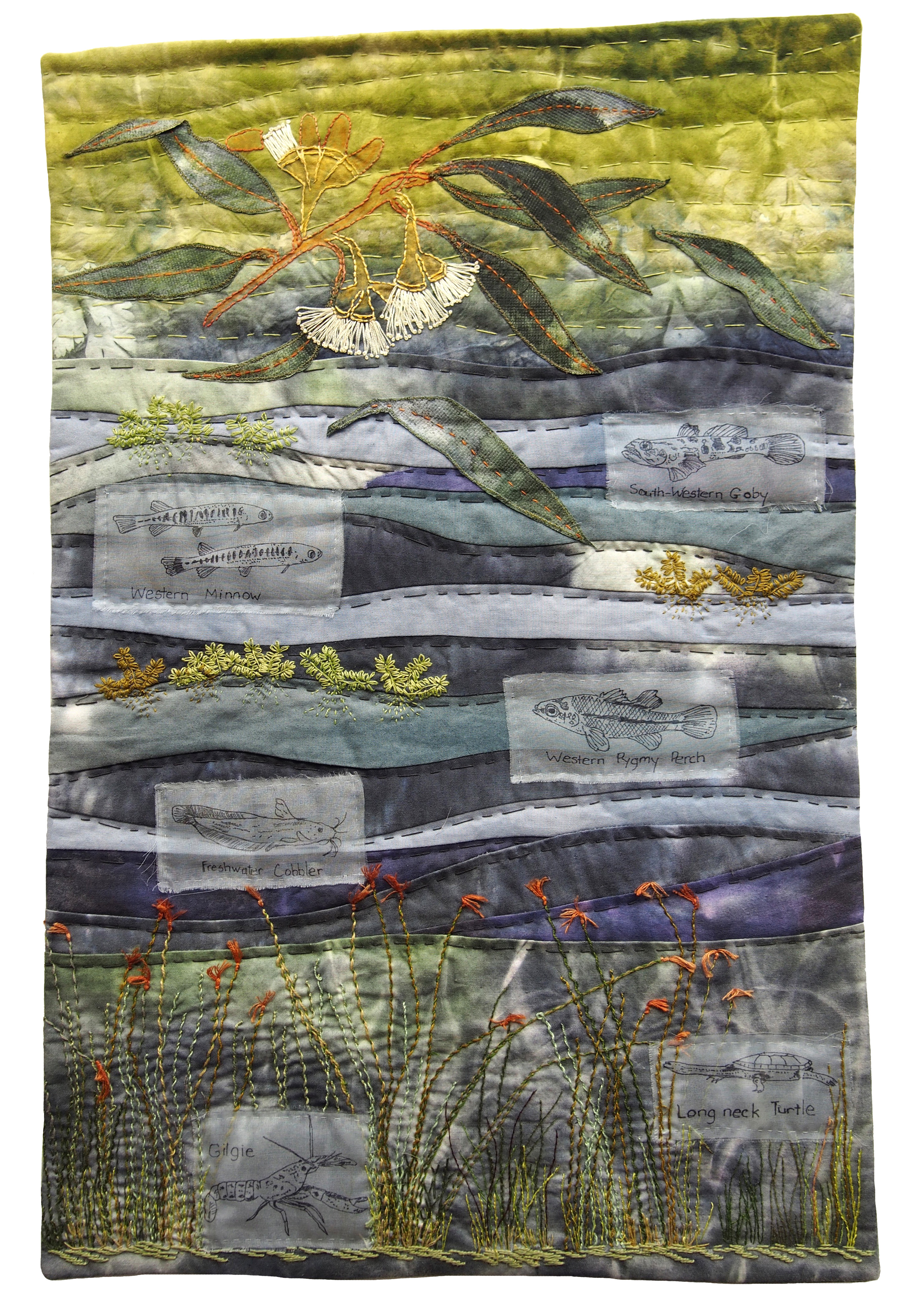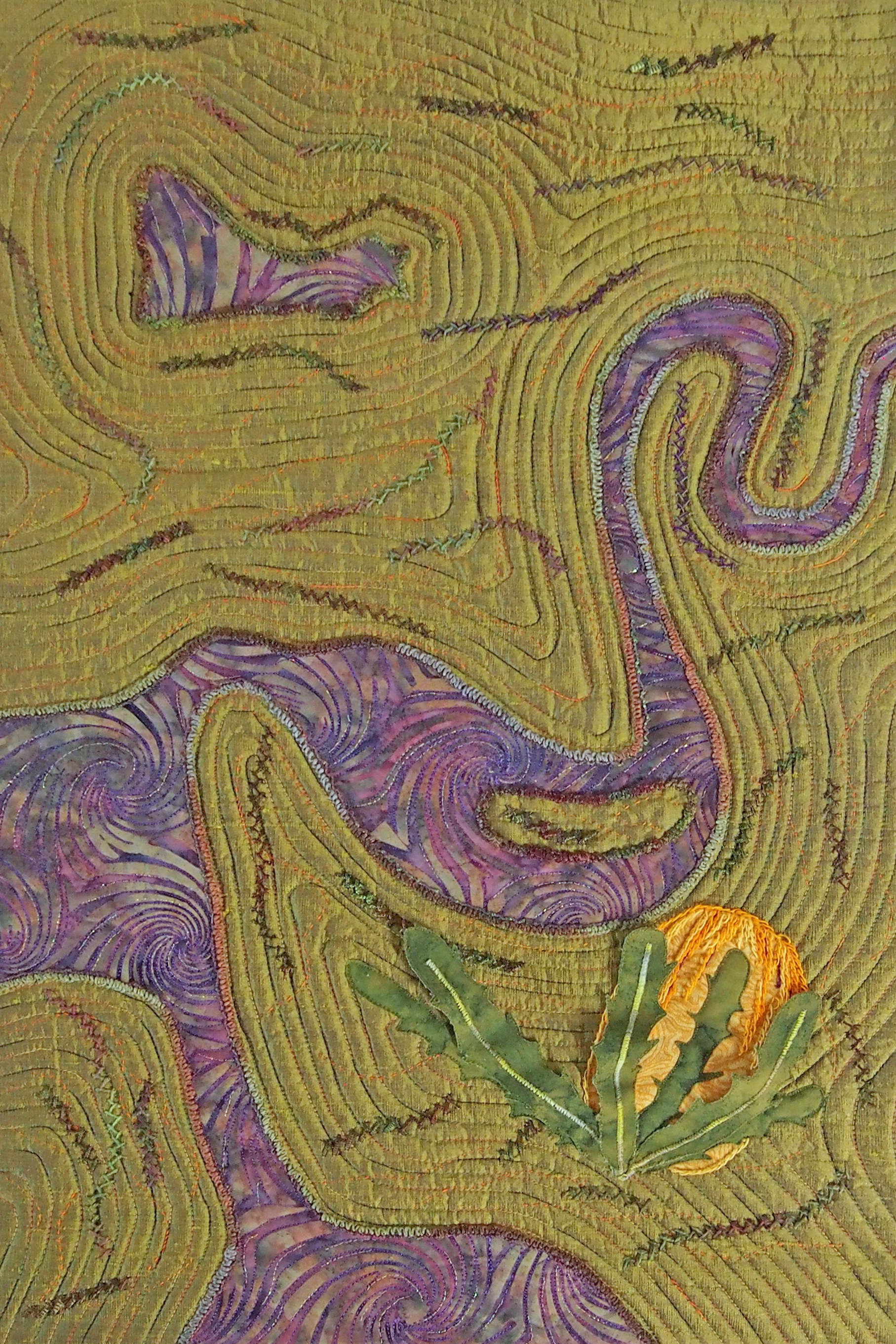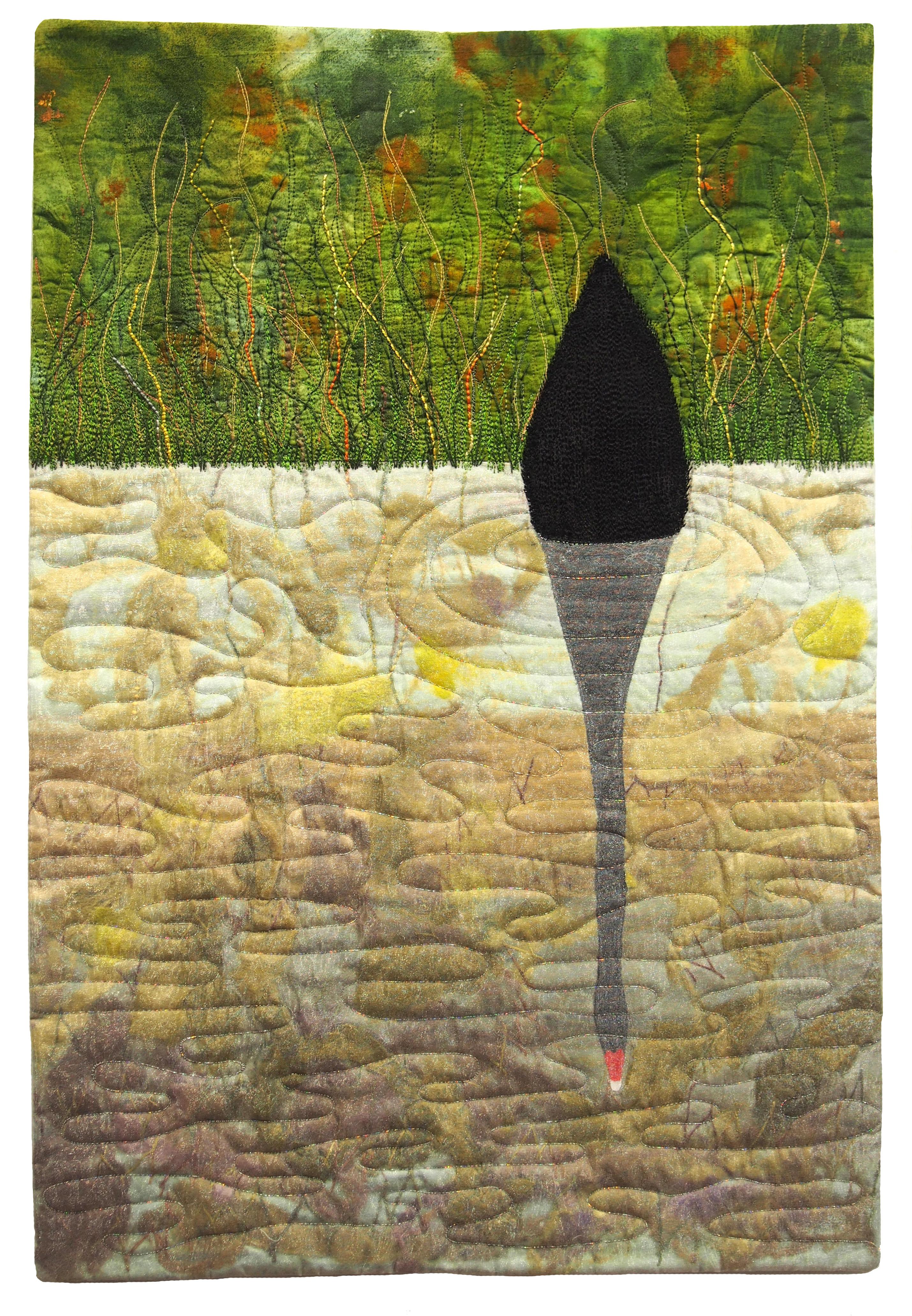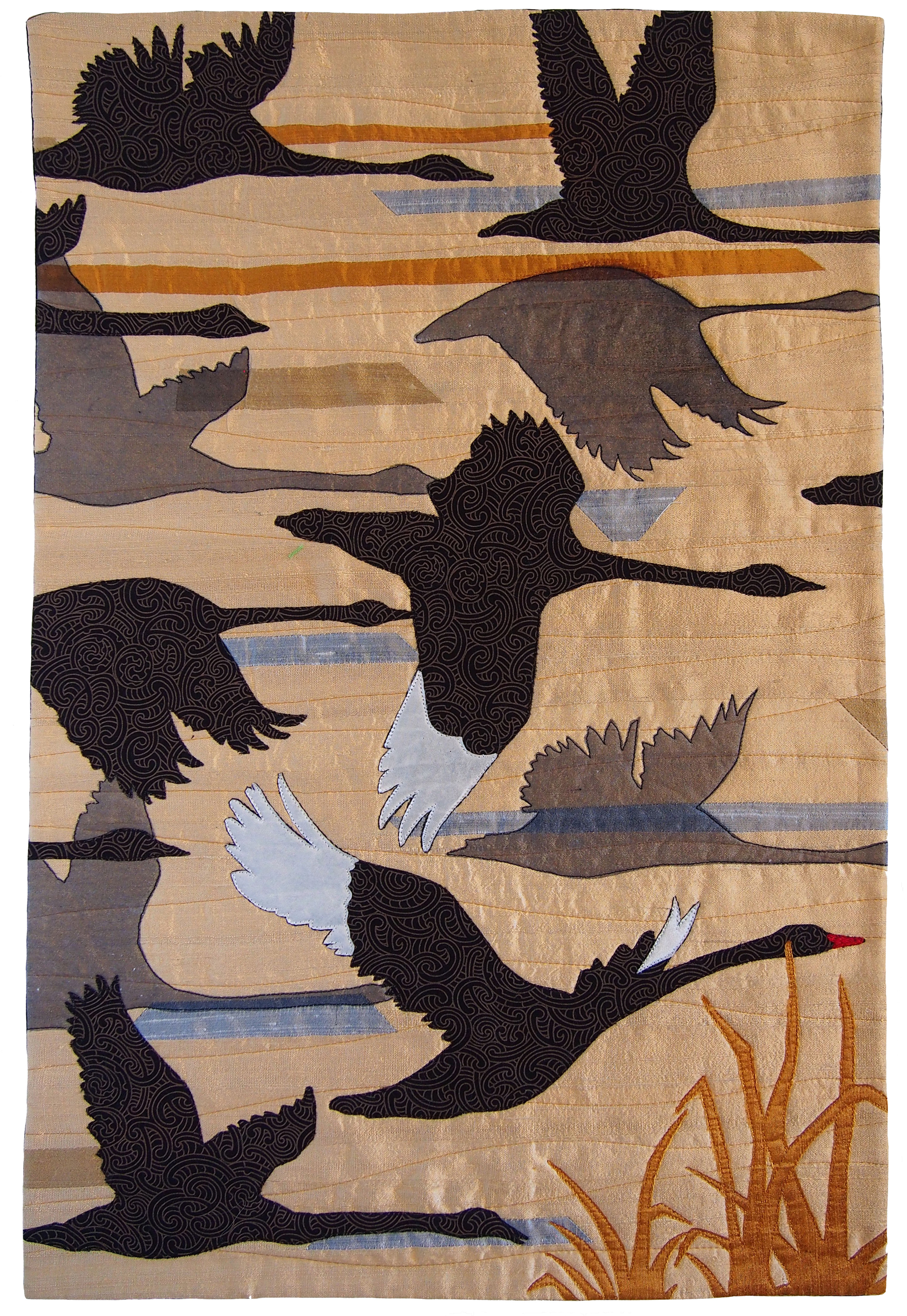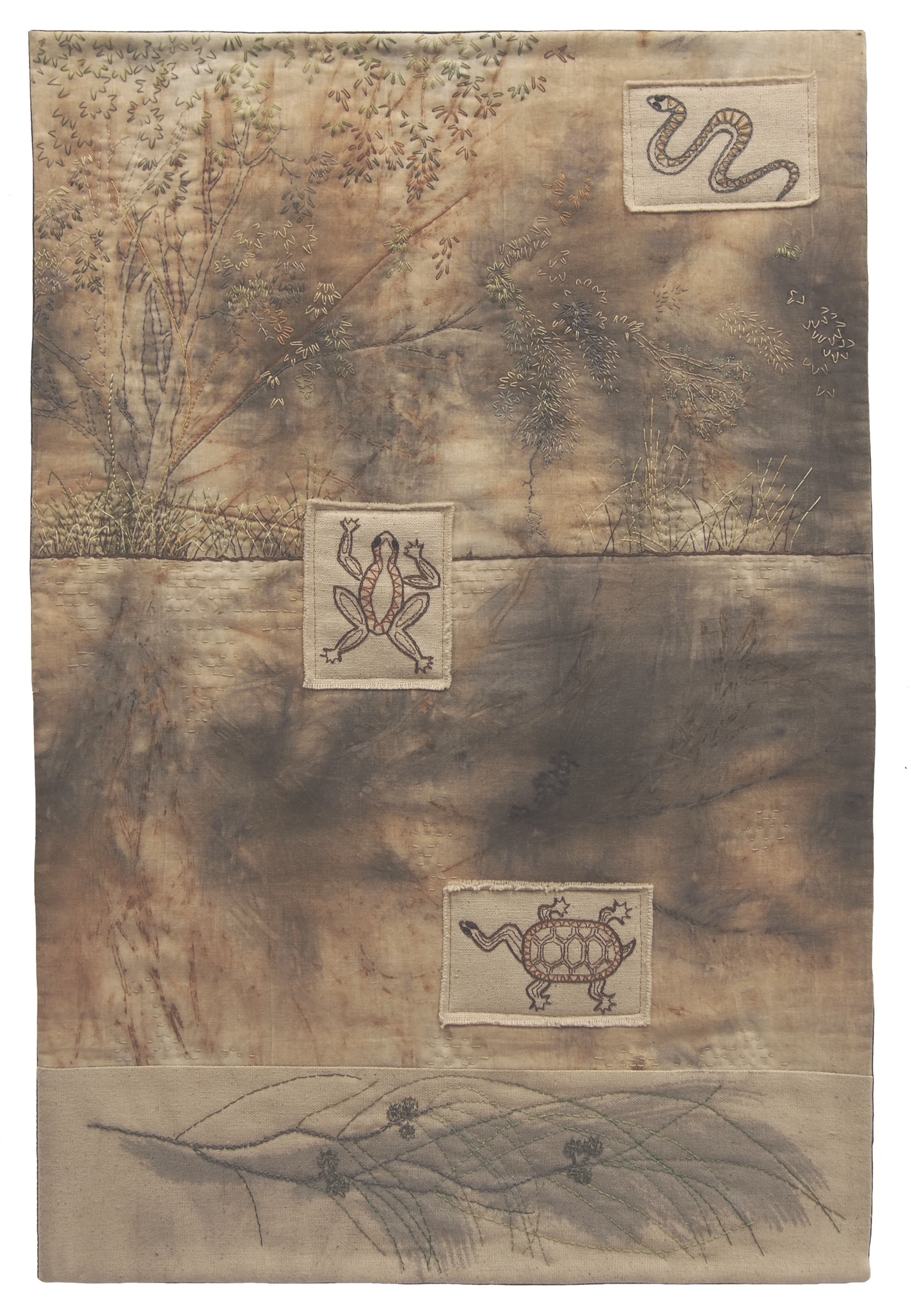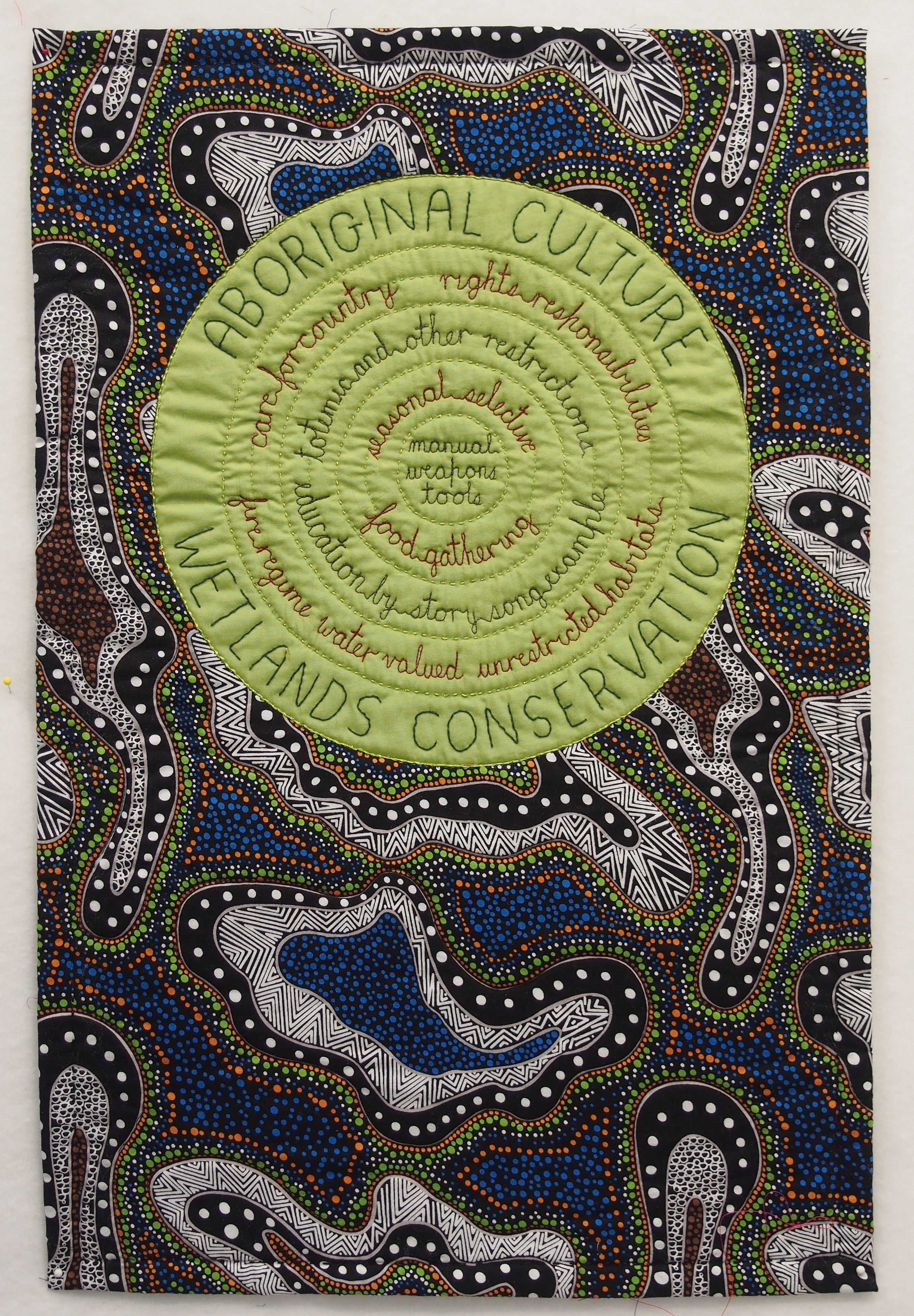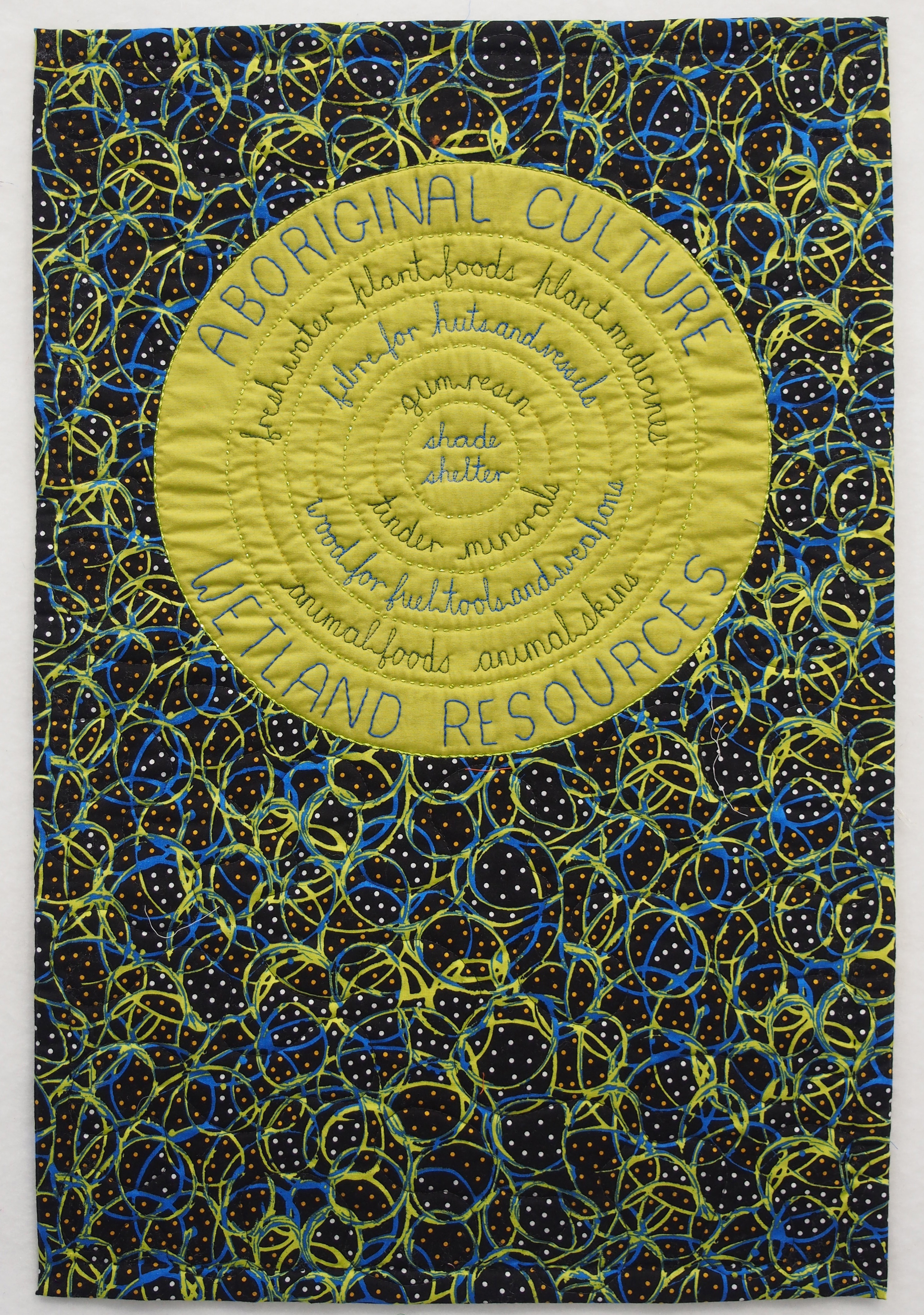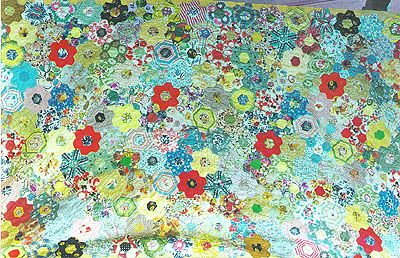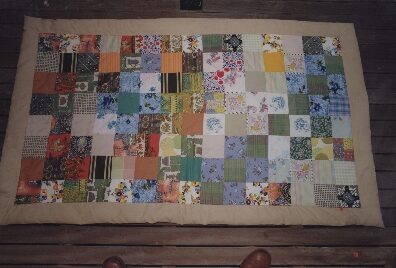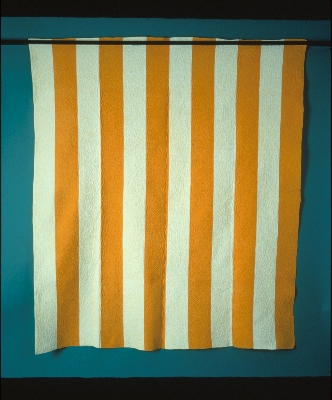-
Owner:
WA Inspired Art Quilters -
Location:
Perth -
Maker:
WA Inspired Art Quilters -
Pattern:
Community -
Dimensions:
Height: 60cm
Width: 40cm
History
The 16 piece ‘Noongar Country, Wetland Glimpses’ quilt set was made by WA Inspired Art Quilters, a West Australian Quilters’ Association group. The 40cm x 60cm quilts depict aspects of wetlands on the Swan Coastal Plain - swamps, estuaries and rivers, and native plants and animals. Text describes what is depicted on the quilts in terms of relevance to traditional Noongar culture. Noongar people were first custodians of the Swan Coastal Plain.
The quilt set was created in the spirit of reconciliation with the Noongar community, and for educative purposes. Accordingly, the following were carried out.
Noongar consultation
- appraisal by the Shire of Cockburn Aboriginal Reference Group, Perth, June 19
- viewing by Noongar elders at the Western Australian Museum, Albany, July 9, arranged by the museum
- viewing by Noongar elder women of the City of Perth, August, arranged by the City of Perth
Exhibition
Initially, the quilt set was exhibited, and talks given about them, at the following venues:
- Western Australian Museum, Albany, July 8 - 29, 2018
- City of Perth Library, August 21 - November 19, 2018
- WA Wetland Management Conference, Cockburn Wetlands Centre, February 1, 2019
- Australasian Quilt Convention, Melbourne, April 11 -14, 2019
Description
01 Bura (Big Swamp) at Dusk by Meg Cowey. Records show that the wetlands of Perth seethed with birds at the beginning of European settlement, and that many carried Noongar names, for example marli (black swan) and nerimba (pelican). Now there are fewer birds to be seen, but they are still enjoyed.
Materials and techniques: Silk raw-edged covered in synthetic tulle; hand and machine embroidery using silk and cotton; machine quilting.
02 Djeran Abundance, by Meg Cowey. During the season of Djeran (approximately autumn), kwiyar (frogs) would be included in the Noongar diet. Not only a source of meat for the Noongar people, they also provide a significant link in the food chain by contributing to the diet of birds and other animals. Frog numbers are now considered to be an indicator of the health of wetlands.
Materials and techniques: silk fabric, machine pieced and layered, machine embroidery.
03 Waterholes and Tracks by Roberta Chantler. While trying to imagine wetland areas prior to white settlement, I envisaged that, owing to the land being inhabited for 40,000 years and the importance of water and wetlands to the inhabitants, there would be well defined walking trails connecting all water sources.
Materials and techniques: Commercial plain cloth. Abstract design freehand drawn with fabric crayons. Hand stitched with commercial threads.
04 Bibool (Freshwater Paperbark) by Roberta Chantler. Noongar people had many uses for the Bibool tree. Large pieces of bark were used in the building their Mia Mias and small flexible pieces as bandages. Fish were wrapped in it for cooking, also other foods were wrapped for preservation when travelling. The leaves contain oil similar to tea tree which is mildly antibacterial and was crushed to treat colds. During times of drought the trees were bled to obtain water.
Materials: Hand dyed papers. Hand dyed salvaged and commercial cotton and silk fabrics. Silk Rod. Crochet doily. Purchased decorative yarn.
05 Cardacut the Cormorant with Eucalyptus and Melaleuca by Elizabeth Humphreys. Cardacut, the cormorant dries his wings after fishing and can often be seen perched over water. Nyoongar food gatherers consider cormorants to be a good indication of fish nearby. Plants for medicinal use as well as building materials, food containers and bandages were readily available in wetland areas along with a plentiful source of a variety of food.
Materials and techniques: Background fabric botanically dyed with eucalyptus leaves. Melaleuca fabric designed by Lorraine Canestrini, digitally printed. Merino wool felt, cotton, gauze, organza and tulle. Hand embroidery and appliqué. Machine quilted.
06 Wyan the White-faced Heron and Gilgies by Elizabeth Humphreys. Wyan, the White-faced Heron, a long-legged bird of the wetlands is often seen actively feeding on tadpoles and frogs in wetland areas. Gilgies were once abundant, providing an easily caught and delicious food as well as a healthy activity for children.
Materials and techniques: Background fabric botanically dyed using eucalyptus leaves. Hand dyed cotton gauze, sari silk strips, organza and tulle. Hand embroidery and appliqué. Machine quilted on a domestic machine.
07 What’s for dinner? by Hilary Arber. A Great Egret with watchful eyes and stealthy steps is a common sight on the Swan Coastal Plain with their habitat recorded at the time of early settlement. As for all birds, the Noongar name has not been retained for common use. Identified by its long yellow bill, black legs and distinctive kinked neck it feeds on insects, crustaceans, frogs and fish in water. During breeding, long filamentous feathers cascade down its back.
Materials and techniques: Layered cotton, silk and silk paper with appliquéd Lutradur, satin, felt and cotton fabrics. Embellished with hemp, cotton and polyester braids and ribbon, hand and machine embroidery and beading. Acrylic paint and Inktense pencils. Machine quilted during construction.
08 Wetland Spiders, A Weaver of Gold and a Wolf by Hilary Arber. The Australian golden orb-weaving spider (Nephila edulis) builds a robust permanent trap for its prey in the bush canopies of coastal wetlands spinning golden silk which glistens in the sun. The Yallorr Keeninyarra dance of the Wadjuk Nyungar people “calls on the Spider Spirit to weave a web of strength and togetherness for men gathered for traditional ceremonies". Equally impressive are Wolf spiders who burrow into the ground and have eight eyes two of which light up like mini headlights at night. Both are important controllers of insect populations.
Materials and techniques: Commercial and hand dyed cotton fabric, polyester basket braid, ribbon braid, florists wire, velvet over poly-wadding, beads, rhinestones, hand dyed muslin, bridal tulle, metallic and cotton thread. Machine appliqué, machine piecing, wash-away embroidery, 3-dimensional padding, buttonhole stitching over wire, hand and machine embellishment, machine quilting, beading.
09 Wetland Windows by Stephanie Knudsen. The wetlands of the Swan Coastal Plain of Western Australia host a wide variety of plant and animal, bird and fish life that traditionally provided sources of food and medicine, shelter and tool making. Depicted here are a few, melaleuca, eucalypts, typha (bulrush/cattails), broad leafed hydrocotyle, free floating azolla pinnata, the long-necked turtle and the purple swamp hen.
Materials and techniques: Hand dyed fabric and paper, sundyeing, hand painting and colouring, embroidery, free cut machine pieced, hand quilted.
10 Underwater Windows by Stephanie Knudsen. The wetlands of the Swan Coastal Plain of WA host a wide variety of plant and animal, bird and fish life. Depicted here is plant life including eucalyptus occidentalis with its creamy white flowers, typha (bulrush/cattails), free floating azolla pinnata and grasses that all break down and provide food for wetland life. Water life includes various fish species, gilgies and the long-necked turtle that are in themselves a source of food.
Materials and techniques: Hand dyed fabrics and papers, sun dyeing hand painting and colouring, embroidery, free cut machine pieced, hand quilted
11 Floodplain by Denise Mallon. Spreading out along the Perth floodplain there were many areas of lakes and swamps where banksia littoralis (swamp banksia) grew. Known as ‘pungara’, the aboriginal people infused the flowers for coughs and colds or a refreshing drink. Urban development has altered the landscape, however the banksia survives along the coastal plain.
Materials and techniques: Silk and cotton fabric, bobbin work, hand and machine embroidery, free motion quilting.
12 Bottoms Up!! by Denise Mallon. Wetlands, swamps and rivers are home to the Black Swan. Mostly vegetarian, it filters the surface water with its beak for algae or, up-ending and stretching its neck, it reaches the weeds and aquatic plants growing in deeper water. Fishing and hunting around the waterways, the moulting of the swan was an indication to Aboriginal people there was a change of season occurring.
Materials and techniques: Hand dye fabrics, fabric paint, organza, silk waste, hand embroidery, machine embroidery, free motion quilting.
13 Maali (Swan) by Stella King. At the time of European settlement on the Derbal Yaragan (Swan Estuary), black swans were abundant on it and other estuaries and inlets of the south-west. Swans were easy for Aboriginal people to capture when they were moulting and, together with cygnets and eggs, were an important component of their diet.
Materials and techniques: Fabric collage using silk dupion, commercial printed cotton and organza. Machine and hand stitched.
14 Draining the Swamps by Stella King. The City of Perth is built on a network of wetlands that have been filled in. For millennia the wetlands had provided the Whadjuk Noongar people with a varied seasonal food source. Among the flora and fauna that provided nourishment were long necked turtles, snakes and frogs that burrowed into the mud as the wetlands dried out. Colonisation decimated the Noongar economy, destroying or depleting traditional resources and creating dependency on introduced goods as the alternative to starvation.
Materials and techniques: Eco printed muslin using casuarina and callistemon foliage; hand and machine stitched.
15 Aboriginal Culture: Wetlands Conservation by Pat Forster. An over-riding ethos of Aboriginal people is to ‘care for country’ and life depended on it. Caring and associated conservation were achieved through: rights and responsibilities; totemic, gender and age restrictions; valuing water; seasonal and selective food gathering so that plants and animals could regenerate; and education from generation to generation, through story, song, dance and example. Firing the land, sometimes unintentionally, having at hand only manual weapons and tools, and no restriction of habitats with roads and fences, also explain conservation of country.
Materials and techniques: Aboriginal fabric, Possum Land and Water Dreaming designed by Heather Kennedy; machine applique, hand embroidery, hand and machine quilting.
16 Aboriginal Culture: Wetland Resources by Pat Forster. Wetlands supplied Noongar people with the key resources of fresh water and food, so were preferred for living except in the winter months when protection from winds and low temperatures was sought inland in the hills. Plant foods supplied carbohydrate; animal foods, particularly fish, supplied protein. Other domestic supplies included: plant medicines, animal skins for cloaks and bags, bark fibre for huts and carrying vessels, gum-resin for gluing, tinder and wood for fires, wood and quartz for tools and weapons, ochre for decoration.
Materials and techniques: Aboriginal fabric, Roots and Seeds designed by Rosemary Pitjara; machine applique, hand embroidery, hand and machine quilting.
Acknowledgements
Extensive research underpins the quilt set including from Noongar oral histories, academic works by indigenous and non-indigenous scholars, Native Title submissions, and early settlers' diaries. Quotations relevant to each quilt are available in a digital booklet.
